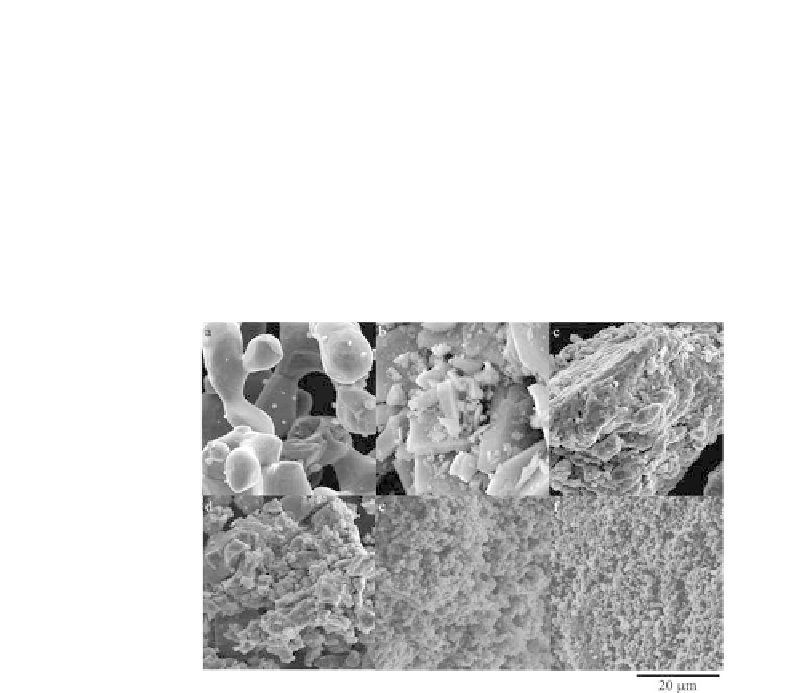Biomedical Engineering Reference
In-Depth Information
of the crystalline phase is very low and/or it forms during TEM
observation. During TEM studies, it has been found that the
amorphous powders was unstable upon exposure to electron beam
and underwent some crystallization.
The SEM morphologies of the fabricated Ti-10 vol% HA powder
mixtures, at the various stages during milling, are shown in Fig. 7.3.
It can be seen that after 10 h of milling, the powder shows inhomo-
geneous size distribution (Fig. 7.3d). With the increase of milling
time, the size of the mixed powders decreases gradually and the
microstructure is
more homogenous (Fig. 7.3e,f).
Figure 7.3
SEM images show morphologies of powder mixtures of
Ti-10 vol% HA composite at the various stages during milling:
(a) Ti — 0 h, (b) HA — 0 h (c) Ti-HA — 3 h, (d) Ti-HA — 10 h,
(e) Ti-HA — 20 h, (f) Ti-HA — 44 h [23].
The formation of the bulk nanocomposites was achieved by
cold uniaxial pressing and sintering of the amorphous materials.
In all cases, XRD analysis of Ti-HA nanocomposites showed the
presence of α-Ti (hexagonal-type structure), but hydroxyapatite no
longer exists (Fig. 7.4). When 10 or 20 vol% of hydroxyapatite is
added to titanium, the lattice constants of Ti increases, as manifested
by a shift of the diffraction peaks of the (1 0 0), (0 0 2), and (1 0 1)
crystal planes of titanium towards smaller angles in comparison
with pure microcrystalline titanium. Calcium has higher atomic
diameter in comparison to titanium, so solid solution of Ca in Ti was















